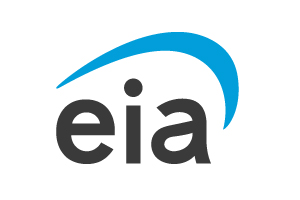BAKU, Azerbaijan, June 7. Crude oil production in the U.S. Federal Offshore Gulf of Mexico (GOA) is expected to climb modestly over the next two years, driven by new offshore projects, according to the latest Short-Term Energy Outlook from the U.S. Energy Information Administration (EIA), Trend reports.
The EIA projects average crude output from the region will reach 1.80 mb/d in 2025 and 1.81 mb/d in 2026, up slightly from 1.77 mb/d this year. Natural gas production, however, is forecast to decline - from 1.79 billion cubic feet per day (Bcf/d) in 2024 to 1.72 Bcf/d in 2025 and 1.64 Bcf/d in 2026.
At those volumes, the Gulf is expected to account for roughly 13% of total U.S. oil production and about 1% of marketed natural gas output over the next two years.
The outlook hinges on the timely development of 13 new offshore fields, which the EIA says are critical to preventing a decline in regional output. Eight of those fields will be connected to existing surface infrastructure through subsea tiebacks, while the other five will rely on four new floating production units (FPUs), including one - Salamanca - that will serve two separate fields.
Combined, the new fields are expected to contribute around 85,000 b/d in 2025 and ramp up to 308,000 b/d in 2026. Associated natural gas output from these projects is projected to average 0.09 Bcf/d next year and 0.27 Bcf/d in 2026.
Production is already underway at three fields: Whale (started January 2025), Ballymore, and Dover (both began operations in April). Whale, one of the largest developments, is expected to peak at 85,000 b/d, while Ballymore and Dover will produce 75,000 b/d and 15,000 b/d, respectively.
Later this year, the Shenandoah field is expected to come online with an initial capacity of 120,000 b/d, growing to 140,000 b/d in early 2026. The Salamanca FPU will also begin producing oil and gas from the Leon and Castile fields in the second half of 2025. Additional subsea tiebacks, including Katmai West, Sunspear, Argos Southwest Extension, and Zephyrus Phase 1, are set to follow.
Three more tiebacks - Silvertip Phase 3, Longclaw, and Monument - are scheduled to begin production in 2026.
However, the EIA cautions that hurricane activity could delay these developments. Colorado State University has forecast an above-average 2025 Atlantic hurricane season, with 17 named storms likely to form, raising the risk of disruptions in the Gulf.
Despite weather uncertainties, the EIA sees the Gulf of Mexico playing a steady role in U.S. energy supply through the mid-2020s, sustained by a wave of new deepwater projects.







